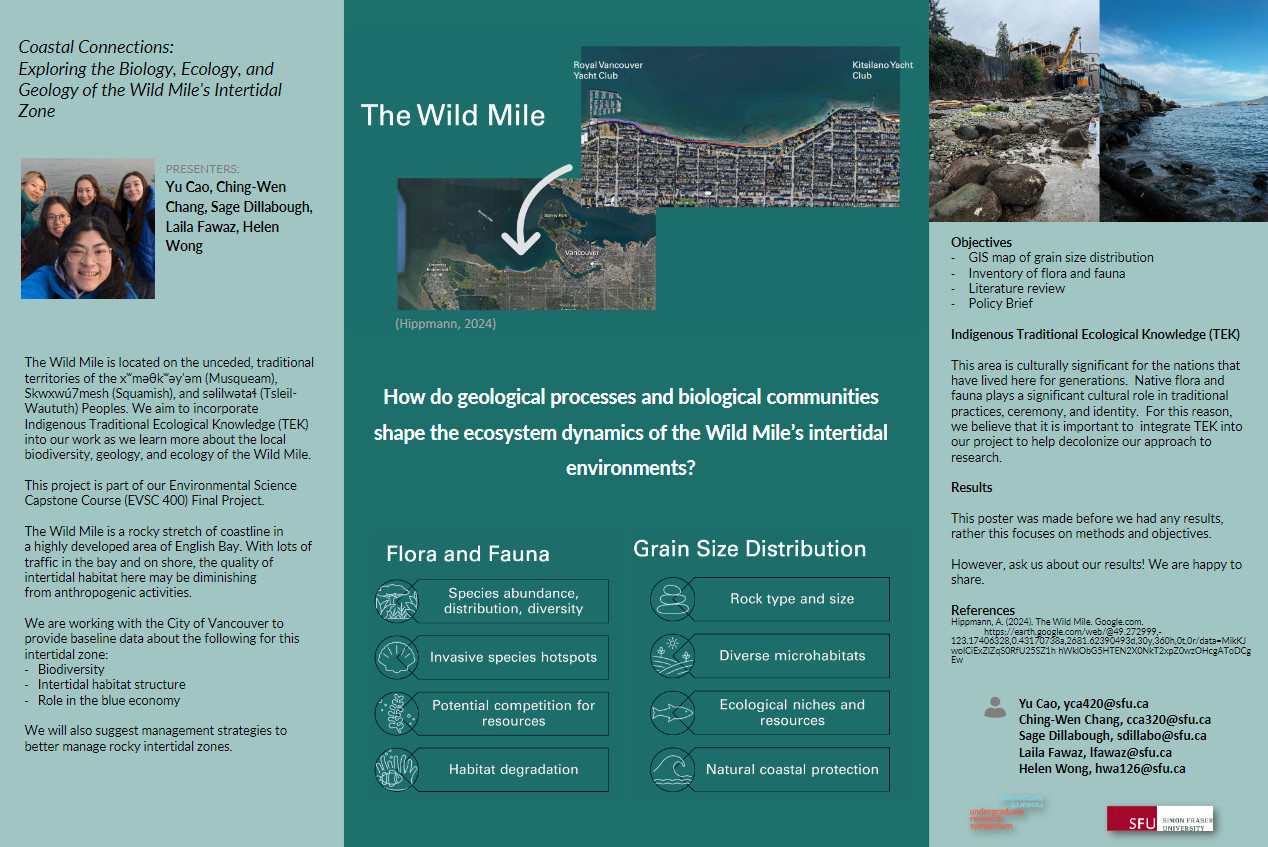Coastal Connections: Exploring the Biology, Ecology, and Geology of the Wild Mile's Intertidal Zone
Main Article Content
Abstract
Our study assessed the ecological dynamics of the intertidal zone of the Wild Mile, a rocky beach along Vancouver's English Bay shoreline, facing increasing pressures from urbanization and climate change. Through fieldwork and literature review, we inventoried intertidal flora and fauna, mapped rock formations, and explored interactions between biology, ecology, and geology. We utilized mobile apps like Seek to identify species present in the intertidal zone. We mapped grain size distribution using Field Maps and exported data to QGIS for more detailed mapping. Our results highlight the importance of preserving native species and managing invasive ones, such as bull kelp and Pacific oysters, to maintain ecosystem resilience. Additionally, the role of ecosystem engineer species, like acorn barnacles and Pacific blue mussels, underscores the intricate connections within intertidal habitats. Strategies such as shoreline enhancement through the placement of boulders and comprehensive habitat assessments are vital for mitigating these threats and preserving ecosystem integrity. Collaborative governance involving Indigenous Peoples, federal, provincial, and municipal perspectives, is essential for effective environmental management, particularly regarding stormwater and sewage impacts and adaptation plans for sea level rise.
Article Details

This work is licensed under a Creative Commons Attribution-NonCommercial-NoDerivatives 4.0 International License.
References
Hippmann, A. (2024). The Wild Mile. Google.com.
https://earth.google.com/web/@49.272999,-
17406328,0.43170738a,2681.62390493d,30y,360h,0t,0r/data=MikKJwolCiExZlZqS0RfU25SZ1h hWklObG5HTEN2X0NkT2xpZ0wzOHcgAToDCgEw

